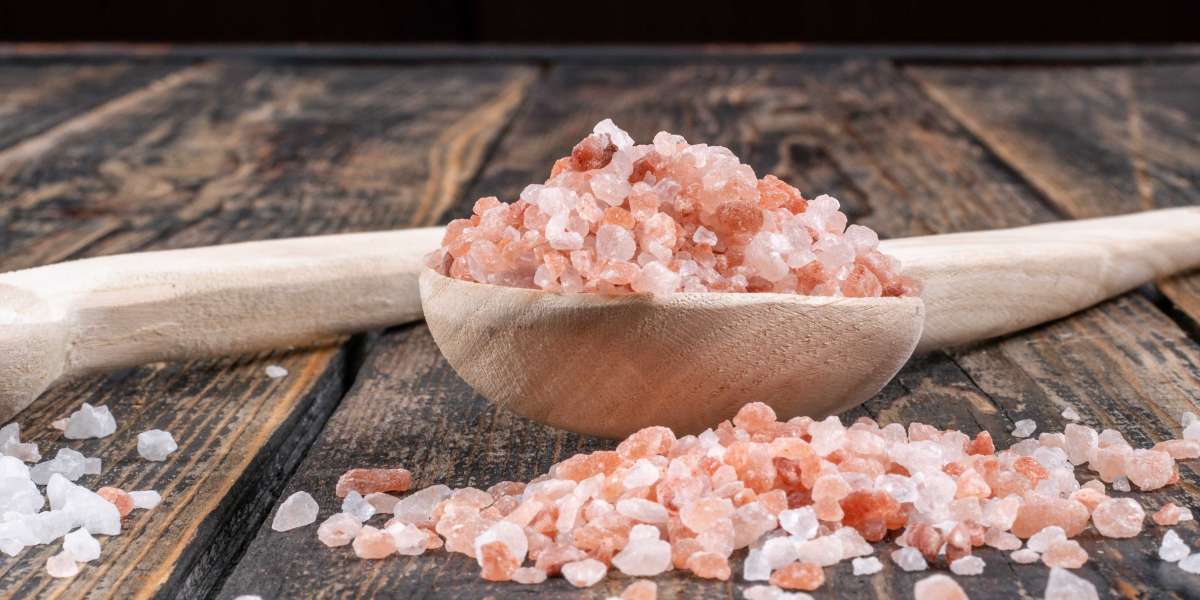Hey there, salt enthusiasts and curious foodies! Today, we're diving into the fascinating world of Himalayan pink rock salt. If you've ever wondered where to find the best quality products from a Himalayan pink rock salt exporter, you're in for a treat. We'll explore everything from the origins of this unique salt to tips on finding reputable suppliers. So, grab a cup of tea (maybe with a pinch of pink salt?), and let's get started!
The Pink Salt Phenomenon: What's All the Fuss About?
Before we jump into finding the best exporters, let's talk about why Himalayan pink rock salt has become such a big deal in recent years.
A Dash of History
Himalayan pink salt isn't just a pretty face in the world of seasonings. This rosy-hued mineral has been around for millions of years, formed from ancient sea beds that were pushed up into the Himalayan mountain range. Pretty cool, right?
More Than Just a Pretty Color
What sets this salt apart isn't just its Instagram-worthy hue. Many people believe it's packed with minerals and trace elements that give it an edge over regular table salt. While the jury's still out on some of the more extravagant health claims, there's no denying that it adds a unique flavor and visual appeal to dishes.
The Hunt for Quality: What to Look for in a Himalayan Pink Rock Salt Exporter
Now that we've covered the basics, let's get to the heart of the matter: finding a quality Himalayan pink rock salt exporter, manufacturer, wholesale supplier. Here's what you should keep in mind:
1. Origin Matters: The Pakistan Connection
When searching for authentic Himalayan pink salt, Pakistan should be on your radar. Why? Because the Khewra Salt Mine in Pakistan is the primary source of genuine Himalayan pink salt. A reputable Himalayan pink rock salt exporter should be able to trace their product back to this region.
2. Purity is Key
High-quality Himalayan pink salt should be just that – pure salt. Look for exporters who can provide information about their salt's purity levels. The best products are usually 98% to 99% sodium chloride, with the remaining percentage made up of trace minerals.
3. Color Consistency
While it's true that Himalayan pink salt can vary in color from light pink to deep red, consistency within a batch is important. A good exporter should offer products with uniform coloration, indicating careful selection and processing.
4. Grain Size Options
Different culinary and wellness applications require different grain sizes. A top-notch Himalayan pink rock salt exporter should offer a range of options, from fine grain for table use to coarse chunks for grinders or salt lamps.
5. Certifications and Compliance
Look for exporters who can provide relevant certifications. These might include:
- FDA compliance for food-grade salt
- Organic certifications (if applicable)
- Non-GMO verification
- Kosher or Halal certifications (if relevant to your needs)
6. Transparent Sourcing and Processing
A reputable exporter should be open about their sourcing and processing methods. They should be able to explain how the salt is mined, cleaned, and packaged without using harmful chemicals or additives.
Where to Start Your Search
Now that you know what to look for, where do you begin your quest for the perfect Himalayan pink rock salt exporter? Here are some avenues to explore:
1. Trade Platforms and Directories
Websites like Alibaba, GlobalSources, and ThomasNet can be good starting points. They often list verified suppliers and exporters from around the world, including those specializing in Himalayan pink salt.
2. Industry Trade Shows
If you're serious about finding the best suppliers, consider attending industry trade shows. Events like the Fancy Food Show or Anuga in Germany often have Himalayan pink rock salt exporters showcasing their products.
3. Direct Outreach to Pakistani Suppliers
Since Pakistan is the primary source, reaching out directly to Pakistani suppliers can be a fruitful approach. The Pakistan Salt Mines Corporation or the Khewra Salt Mines administration might be able to point you in the right direction.
4. Specialty Food Importers
If you're looking for smaller quantities or don't want to deal with international shipping yourself, specialty food importers in your country might be a good option. They often have established relationships with quality exporters.
Red Flags to Watch Out For
While there are many reputable Himalayan pink rock salt exporters out there, it's important to be aware of potential red flags:
1. Suspiciously Low Prices
If a deal seems too good to be true, it probably is. Unusually low prices might indicate lower quality salt or unethical sourcing practices.
2. Reluctance to Provide Information
A trustworthy exporter should be happy to answer questions about their sourcing, processing, and quality control measures. If they're evasive, consider it a warning sign.
3. Lack of Proper Documentation
Reputable exporters should be able to provide necessary documentation, including certificates of analysis, export licenses, and any relevant food safety certifications.
4. Inconsistent Product Quality
If sample batches vary widely in color, texture, or taste, it might indicate poor quality control or mixing of salts from different sources.
Beyond Culinary Use: The Versatility of Himalayan Pink Salt
While we often think of salt primarily for cooking, Himalayan pink rock salt has found its way into various other applications. When looking for an exporter, consider if they offer products for these alternative uses:
1. Salt Lamps and Decor
Those warm, glowing salt lamps you've seen? They're made from large chunks of Himalayan pink salt. Some exporters specialize in supplying salt for these decorative and purportedly air-purifying items.
2. Bath and Body Products
Himalayan pink salt is popular in bath salts, body scrubs, and other personal care products. If you're in the beauty or wellness industry, look for exporters who can provide food-grade salt suitable for these applications.
3. Himalayan Salt Tiles for Cooking
Some culinary enthusiasts use large, flat slabs of Himalayan pink salt for cooking and serving. These can add a subtle flavor to foods and make for an impressive presentation.
4. Animal Nutrition
Believe it or not, Himalayan pink salt is sometimes used in animal feed and as salt licks for livestock. If you're in the agricultural sector, some exporters might offer products specifically for this purpose.
The Environmental Angle: Sustainability in Salt Sourcing
As consumers become more environmentally conscious, it's worth considering the sustainability practices of Himalayan pink rock salt exporters. Here are some points to ponder:
1. Mining Practices
Inquire about the mining methods used. Responsible exporters should be able to speak to their efforts to minimize environmental impact and ensure worker safety.
2. Packaging Options
Look for exporters who offer eco-friendly packaging options. Some might use recycled materials or offer bulk packaging to reduce plastic waste.
3. Transportation Methods
While it's challenging to eliminate the carbon footprint of transporting salt from Pakistan, some exporters might use more efficient shipping methods or participate in carbon offset programs.
The Future of Himalayan Pink Salt: Trends to Watch
As you embark on your journey to find the perfect Himalayan pink rock salt exporter, it's worth keeping an eye on emerging trends in the industry:
1. Traceability and Blockchain
Some forward-thinking exporters are exploring blockchain technology to provide complete traceability of their salt from mine to table.
2. Artisanal and Small-Batch Options
There's a growing interest in artisanal and small-batch salt production. Some exporters might offer limited edition or specially processed salts for discerning customers.
3. Flavor-Infused Varieties
While purists might stick to plain Himalayan pink salt, some exporters are experimenting with flavor-infused varieties, blending the salt with herbs, spices, or even edible flowers.
Making Your Decision: Balancing Quality, Price, and Values
As you evaluate different Himalayan pink rock salt exporters, remember that the "best" choice will depend on your specific needs and values. Here are some final thoughts to guide your decision:
1. Sample Before You Commit
Most reputable exporters will be happy to provide samples. This allows you to assess the quality, color, and taste before making a larger commitment.
2. Consider Minimum Order Quantities
Exporters often have minimum order quantities. Make sure these align with your needs, whether you're buying for personal use or wholesale distribution.
3. Build a Relationship
Finding a great Himalayan pink rock salt exporter isn't just about a single transaction. Look for a supplier you can build a long-term relationship with, ensuring consistent quality and potentially better pricing over time.
4. Trust Your Instincts
After doing your research and due diligence, trust your instincts. If something feels off about a potential exporter, it's okay to keep looking.
Wrapping Up: Your Journey to Pink Salt Perfection
There you have it – a comprehensive guide to finding quality products from a Himalayan pink rock salt exporter. Remember, whether you're a home cook looking to elevate your dishes, a restaurateur seeking the finest ingredients, or a wellness entrepreneur exploring new product lines, the perfect Himalayan pink salt is out there waiting for you.
Take your time, do your research, and don't be afraid to ask questions. The world of Himalayan pink salt is rich with history, flavor, and possibility. Happy salt hunting!














